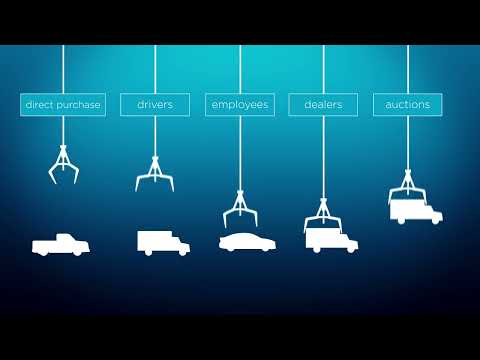- SolutionsWith a strategic solution that works for you and your business, you can unlock revenue-generating opportunities and begin managing your fleet as an investment.Overview
- About UsWhen Holman was founded in 1924, we set something positive in motion. Our consistent focus on people and our commitment to integrity make us who we are today.Overview
 Join Our TeamWe’re not just in the automotive business, we’re in the people business. Join us for the ride.Browse Careers
Join Our TeamWe’re not just in the automotive business, we’re in the people business. Join us for the ride.Browse Careers
Taking Inventory of Your Vehicle Utilization
Holman Marketing
July 28, 2022

Your fleet needs to be able to adapt and grow in uncertain circumstances. The past few years have forced you to evolve and consider things like health and safety procedures, government mandates, scale-backs, and many disruptions in supply and demand chains. While circumstances may look different now, there is something that always remains constant. Proper utilization of your assets leads to reduced costs and increased resale value.
At the end of the day, keeping an eye on vital metrics can lead to reduced downtime, lower fuel consumption, and boosted productivity. Essentially, fixing utilization issues is still the key to optimizing your fleet and plays a vital role in your bottom line.
As you adapt and learn to conquer planning for the unexpected, ask yourself, “Have I reevaluated my fleet strategy to ensure that it is current?”
Brush up on the basics
To understand your fleet utilization rate, you have to gain insight into your metrics. You can use your telematics features here to collect:
- Arrival and leave time of assets
- Travel time
- Equipment use/ engine run time
- Idle time
- Maintenance events and time
Once you’ve configured these metrics, you can use them to build a plan for optimizing your fleet utilization.
Are you leveraging data properly?
Collecting data via telematics can help you determine if you have the right number of vehicles and are equipped for job efficiency.
For example, by comparing odometers with maintenance and repair records, you can identify underutilized vehicles and accelerate the life cycle plan for these assets. Sell them and turn them into cash flow for your company.
Partnering with a team that understands the importance of seeing your fleet’s larger picture is important. Do you have a streamlined supply chain process in place that works seamlessly together?
When it comes to managing repair costs and downtime, plus having visibility to your entire vehicle supply chain, while maintaining an optimized replacement schedule, you’re dealing with a lot of components. Oftentimes, miscommunication across the supply chain process can become compartmentalized instead of working as a whole. We call this silofication.
The answer?
Collaborate with your stakeholders for long-term productivity and savings. By partnering with Holman, you’ll keep the hidden flaws out of your supply chain. You’ll have a strong budget, leverage our management expertise, and turn data into smart decisions that produce tangible results.
Check out this success story about how Holman Consulting Services team helped a fleet determine how different types of vehicles were being used in order to put a best practices cost-control method into place.
Related Resources
Explore more related industry news, insights, and developments.









